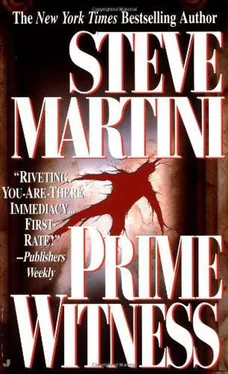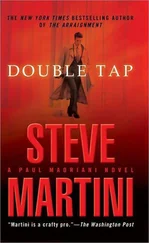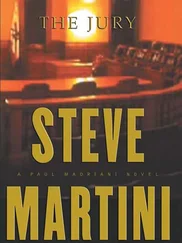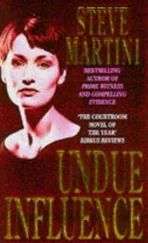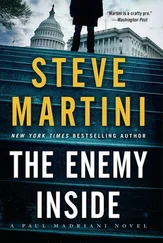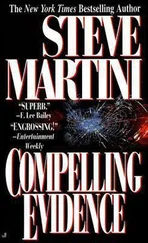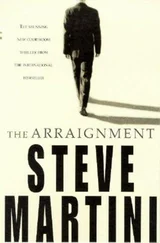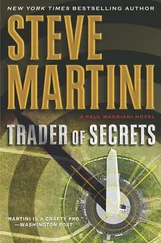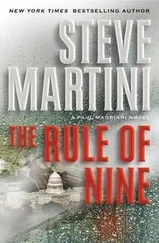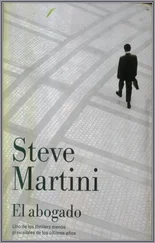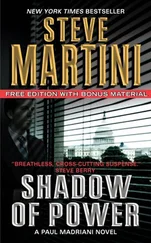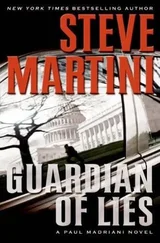Steve Martini - Prime Witness
Здесь есть возможность читать онлайн «Steve Martini - Prime Witness» весь текст электронной книги совершенно бесплатно (целиком полную версию без сокращений). В некоторых случаях можно слушать аудио, скачать через торрент в формате fb2 и присутствует краткое содержание. Год выпуска: 1992, ISBN: 1992, Издательство: Jove, Жанр: Триллер, на английском языке. Описание произведения, (предисловие) а так же отзывы посетителей доступны на портале библиотеки ЛибКат.
- Название:Prime Witness
- Автор:
- Издательство:Jove
- Жанр:
- Год:1992
- ISBN:9780515112641
- Рейтинг книги:5 / 5. Голосов: 1
-
Избранное:Добавить в избранное
- Отзывы:
-
Ваша оценка:
- 100
- 1
- 2
- 3
- 4
- 5
Prime Witness: краткое содержание, описание и аннотация
Предлагаем к чтению аннотацию, описание, краткое содержание или предисловие (зависит от того, что написал сам автор книги «Prime Witness»). Если вы не нашли необходимую информацию о книге — напишите в комментариях, мы постараемся отыскать её.
Prime Witness — читать онлайн бесплатно полную книгу (весь текст) целиком
Ниже представлен текст книги, разбитый по страницам. Система сохранения места последней прочитанной страницы, позволяет с удобством читать онлайн бесплатно книгу «Prime Witness», без необходимости каждый раз заново искать на чём Вы остановились. Поставьте закладку, и сможете в любой момент перейти на страницу, на которой закончили чтение.
Интервал:
Закладка:
It’s a truism that in the trial of any case, something will always go wrong, though usually it does not occur on the eve of opening argument as it has here. This maxim has now struck my own case, dead center and below the proverbial waterline.
The commercial photo lab hired by Kay Sellig to upgrade the quality of our photos to be put before the jury has misplaced a critical piece of evidence, a short length of cord used in one of the murders. Sellig has me on the phone, giving me this news.
“How in the hell?” I say.
“They are looking for it,” she says, “turning the place upside-down.” She’s trying to calm me down. She tells me that they are confident they will find it.
“When?” I say.
“That’s the big question,” she tells me.
“We have crystal clear colored photos of all of the pieces,” she says. Apparently the lab lost the missing piece of plastic sheathing after their processing was finished.
I wonder aloud whether they could have thrown this out without thinking.
Sellig cannot be sure, but tells me she doesn’t think this is the case. “They knew what it was for,” she says. “That it was important.”
“That didn’t stop them from losing it.”
She is silent on the other end of the line. Sellig had advised against allowing the evidence out of our possession, but I pushed for better enlargements as this was the centerpiece of our case. I am now paying the price for not heeding her warning.
She tells me that she’s about to leave for the lab, to talk to the owner, to help them look.
“If we can’t find it,” she says, “maybe the court would allow us to use the photos instead, as the best evidence,” she says.
This is not likely, I tell her. “The defense has an absolute right to have the cord examined by its own experts. I wouldn’t count on it,” I say.
Tomorrow morning I start my case-in-chief, opening argument. We have spent the last two days selecting our jury, or rather the judge has. Ingel, true to his promise not to cut any slack, pressed us to the wall, finally insisting on doing the voir dire himself, posing questions we submitted in writing, at least the ones he thought appropriate. Judges in criminal cases are permitted to do this under an initiative adopted by voters a few years ago, though unlike Ingel, most still allow the lawyers to ask critical questions.
Chambers stomped up and down the courtroom railing about this, his exclusion from the jury selection process. He got nowhere, except perhaps the listing of another ground for appeal. That Ingel completed this task in two days was no mean feat, probably a record. In a capital case the jury must be “death qualified”-questions must be posed to assure that if convicted as charged, the panel would have no qualms about imposing the death penalty.
The haste with which this process was completed has turned it into a dry exercise. Neither Goya nor I have any real feel for this group, our panel of twelve jurors and six alternates. I suspect that Chambers is equally blind, but no more so than one of the prospective jurors.
When the man with the white cane appeared in the box, I objected, told Ingel that a major portion of our case was demonstrative in nature, photos of evidence that required visual acuity on the part of the trier of fact. He hammered me down, citing a code section that does not permit the exclusion of a juror because of impaired sight. I was ultimately forced to burn a peremptory challenge to remove the man from the panel. With this Ingel smiled, as if to say now I could deal with the wrath of the sight-impaired lobby.
He knew as well as I that no reader could describe our photographic evidence to the juror without making the fundamental judgment for the juror, the question whether the pictures portrayed what they purported to or not.
I hold my breath and ask Sellig the critical legal question about the missing evidence, the piece of cord.
“Do you know which piece it is?” I say. “The missing length of sheathing from the cord?”
The sections of clothesline cord, sixteen in all, used on the victims, seventeen if you count the coiled length discovered in the Russian’s van, are the critical links in our chain of evidence. Taken together, piece-by-piece they form a continuum connecting the four college victims with the coiled length of cord found in the vehicle. The question is at what point this chain is now broken. This will tell me how many of the counts of murder may be in jeopardy if we cannot find the missing length.
Sellig is scrambling through her notes on the other end of the line, breathing heavily into the phone as she looks for the information. She has coded these pieces by number and letter, marking them for identification. It takes her several seconds to locate what she’s looking for, the legend for this code.
“It looks like. Yes,” she says. “It was two-D.”
This means nothing to me.
She explains that four pieces of cord were used on each victim, two to tie off the ankles, and two more to bind the wrists. Each of these pieces has been lettered in sequence, A through D.
“The number assigned represents the order of the victims,” she says. “This is from the second victim, the last section of cord used on that victim.”
“Julie Park,” I say.
“Yes.”
This means the evidentiary link is broken between Park and the third victim. Unless we can find the missing piece of cord, I could be compelled to dismiss the charges involving the murders of Julie Park and the first victim, her boyfriend Jonathan Snider. Without the cord there is nothing linking them to Iganovich other than a similar MO in the commission of the crimes. Chambers, who is keying on the Scofield murders and the similar fact pattern there, would chew me up in such an argument.
I lean back in my chair, suck a lot of air, and look up at the tiny perforated holes in the ceiling. I wonder how I would ever garner the courage to break this news to Kim Park, and pray that it will not be necessary.
“Keep me posted,” I tell Sellig. “Call me as soon as you talk to the people at the lab.” I hang up.
Lenore is waiting patiently to talk to me, sitting in one of the chairs across from my desk; she has tuned in to a portion of my phone conversation.
“They lost part of the rope?” she says.
I nod. “We could be forced to dump the counts relating to Julie Park and the Snider kid,” I say.
“Damn it.” Goya gives me a pained expression. Then she quickly picks up the broken pieces of this equation and puts a face on it, I think for my benefit.
“I guess it could be worse,” she says. “They could have lost the last piece.” She means the slender length of cord linking all the others to the coiled rope in the van. With this our entire case would have evaporated.
“We’re not out of the woods,” I say. “Our case may only be marginally better than none at all.”
“What do you mean?”
“I mean Chambers is already keying on the Scofield cases. If we’re forced to dismiss the Park and Snider counts, we have only one set of murders to the jury.”
A look comes over her face as if she sees where I’m going. There is nothing left to distinguish the second set of student killings from the Scofield crimes. In both cases the killer used consecutive sections of cord to tie down the couples, though the cord between cases doesn’t match up. The metal stakes used in the second murders are a match, as are the stakes used on the Scofields. But as between these two crimes, again, the stakes are different.
“It makes it look as if the killer changed his tools with each set of murders,” she says.
“We can forget our expert on criminal profiling,” I tell her. “Without Park and Snider we no longer have pattern crimes, just an isolated set of gruesome killings. And if Chambers can put his man in Canada at the time of the Scofield murders. .” I let the thought trail off, the conclusion obvious. It is the trouble with a theory built entirely around circumstantial evidence: remove one of the critical pins holding it together and your case can fall apart.
Читать дальшеИнтервал:
Закладка:
Похожие книги на «Prime Witness»
Представляем Вашему вниманию похожие книги на «Prime Witness» списком для выбора. Мы отобрали схожую по названию и смыслу литературу в надежде предоставить читателям больше вариантов отыскать новые, интересные, ещё непрочитанные произведения.
Обсуждение, отзывы о книге «Prime Witness» и просто собственные мнения читателей. Оставьте ваши комментарии, напишите, что Вы думаете о произведении, его смысле или главных героях. Укажите что конкретно понравилось, а что нет, и почему Вы так считаете.
